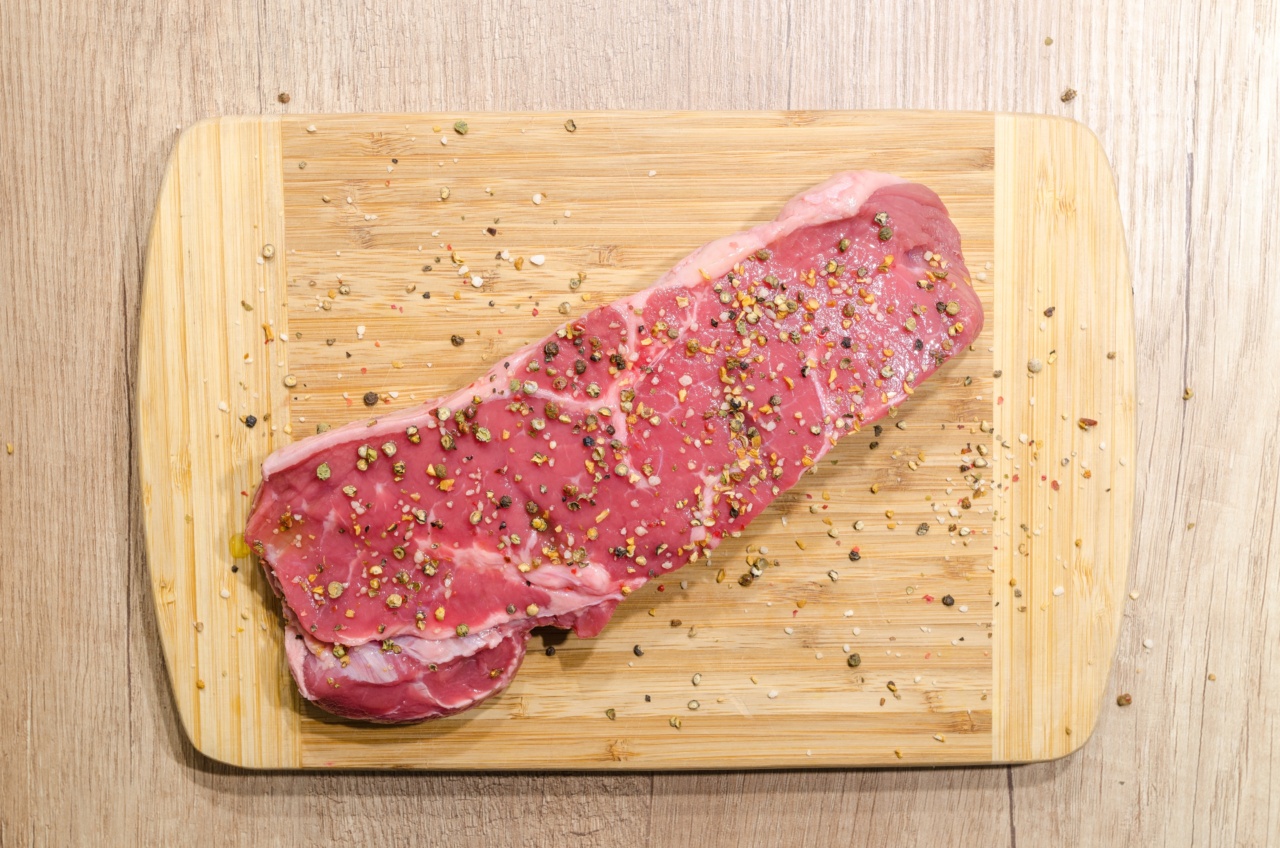Raw feeding, or BARF (biologically appropriate raw food), has become an increasingly popular trend among dog owners. Many claim that feeding dogs raw meat provides numerous health benefits and is more natural and nutritious than commercial dog food.
However, like many things in life, there are also several myths surrounding this feeding approach. In this article, we will be busting some common myths about dogs and raw meat.
Myth #1: Raw Meat is More Nutritious Than Commercial Dog Food
The idea that raw meat is more nutritious than commercial dog food is not entirely true.
While it may be true that whole, raw meat contains essential nutrients, vitamins, and minerals needed for a dog’s diet, the same can be said for commercial dog food. To ensure adequate nutrition and avoid deficiencies, many commercial dog food brands include essential nutrients, vitamins, and minerals in their formulations.
Furthermore, not all raw meat is created equal. If your dog’s raw diet is not balanced and does not include essential nutrients, vitamins, and minerals, they may suffer from nutritional deficiencies, which could lead to a range of health concerns.
Myth #2: Dogs Can Digest Raw Meat Easily
Dogs are carnivorous animals and are evolutionarily designed to eat raw meat. However, that does not make them immune to the bacteria found in raw meat. Raw meat can contain harmful bacteria such as Salmonella and E.
coli, which can cause severe illness in dogs and humans alike.
Dogs do have the necessary stomach acidity to help break down and digest raw meat. However, feeding your dog a raw meat diet does not guarantee they will digest it without issue.
Like any other food, if your dog has a sensitive stomach, they may experience digestive problems. Furthermore, feeding your dog raw meat could lead to food poisoning from bacteria found in the meat.
Myth #3: A Raw Meat Diet Can Cure Health Problems
Some dog owners believe that feeding their dogs a raw meat diet can cure health problems. However, there is currently no evidence to suggest that a raw meat diet can cure health problems.
While feeding your dog a balanced diet that includes essential nutrients, vitamins, and minerals may help improve their overall health, it is not a miracle cure for health problems.
If your dog is experiencing health problems, it is crucial to seek veterinary care. Your veterinarian can diagnose the underlying cause of your dog’s health problem and recommend the most appropriate treatment.
Myth #4: Feeding Raw Meat Will Keep Your Dog’s Teeth Clean
Some dog owners believe that feeding raw meat can help keep their dog’s teeth clean. While it is true that chewing on bones can help clean your dog’s teeth, feeding raw meat does not have the same effect.
In fact, feeding your dog raw meat could actually contribute to dental problems such as chipped or broken teeth, gum disease, and tooth decay.
If you want to keep your dog’s teeth clean, it is best to provide them with dental chews, bones, and regular brushings.
Myth #5: Raw Meat Can Boost Your Dog’s Immune System
Proponents of raw feeding claim that feeding dogs raw meat can boost their immune system. While there is no concrete evidence to support this claim, there are studies that suggest that a balanced diet may help support a dog’s immune system.
However, feeding your dog an unbalanced raw meat diet can lead to nutritional deficiencies, which can weaken their immune system.
Additionally, if the raw meat is contaminated with harmful bacteria, your dog could suffer from infections that could severely compromise their immune system.
Myth #6: Dogs on a Raw Meat Diet Will Not Need to See a Vet
Some dog owners believe that feeding their dogs a raw meat diet will eliminate the need for vet visits. This is not true. Dogs on a raw meat diet still need regular vet check-ups to ensure they are healthy.
Additionally, if your dog experiences any health problems, they may need to see a vet regardless of their diet.
Ultimately, the decision to feed your dog a raw meat diet is a personal one. However, it is important to weigh the risks and benefits carefully before making a decision.
If you decide to feed your dog a raw meat diet, ensure it is balanced, and includes essential nutrients, vitamins, and minerals. Always handle raw meat with care and follow food safety guidelines to prevent harmful bacteria and foodborne illness. Additionally, do not assume that feeding your dog a raw meat diet will eliminate the need for vet visits.
Regular vet check-ups are still crucial for your dog’s health and well-being.
Myth #7: Dogs Must Eat Raw Meat to Be Healthy
While raw feeding may have its benefits, it is not the only way to ensure your dog is healthy. Feeding a balanced diet that includes essential nutrients, vitamins, and minerals is key to maintaining your dog’s health.
Many commercial dog food brands offer high-quality, balanced meals that can provide all the necessary nutrients for your dog.
Myth #8: Raw Meat Is More Natural Than Commercial Dog Food
Many raw feeding advocates argue that raw meat is a more natural diet for dogs than commercial dog food.
While it may be true that dogs may have eaten raw meat thousands of years ago, the modern-day dog has evolved to tolerate and thrive on a variety of diets. Additionally, commercial dog food brands have evolved over the years to provide balanced meals that cater to a dog’s nutritional needs.
Furthermore, commercial dog food brands are subject to regulatory standards that ensure their products are safe for dogs to eat.
Feeding raw meat to your dog, on the other hand, comes with inherent risks due to the potential for harmful bacteria in the meat.
Myth #9: Raw Meat Is Safe for All Dogs
Raw feeding may not be suitable for all dogs. Certain dogs, such as puppies, pregnant dogs, and dogs with compromised immune systems, are at a higher risk for foodborne illness from raw meat.
Additionally, some dogs may have digestive problems that make it difficult for them to digest raw meat properly.
Before starting your dog on a raw meat diet, it is important to consult with your veterinarian. Your veterinarian can assess your dog’s individual needs and recommend the best feeding approach.
Myth #10: Raw Meat Is More Affordable Than Commercial Dog Food
Feeding your dog a raw meat diet can be more expensive than feeding commercial dog food. Raw meat can be expensive, and feeding a balanced raw meat diet requires careful meal planning and preparation, which can be time-consuming and costly.
On the other hand, commercial dog food is more affordable and requires less preparation time, making it a more convenient option for many dog owners.
Conclusion
Raw feeding may have its benefits, but it is not a one-size-fits-all approach to feeding dogs. It is important to weigh the risks and benefits carefully before making a decision.
If you decide to feed your dog a raw meat diet, ensure it is balanced and includes all the essential nutrients, vitamins, and minerals your dog needs. Additionally, always follow food safety guidelines to prevent harmful bacteria and avoid foodborne illness.
Ultimately, feeding your dog a balanced diet that meets their nutritional needs is key to maintaining their health and well-being. Consult with your veterinarian for guidance on the best feeding approach for your dog.































